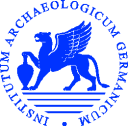The Ramesside Period in Egypt: Studies into Cultural and Historical Processes of the 19th and 20th Dynasties


The 19th and 20th Dynasties form a significant epoch of Ancient Egypt marked by an extraordinary intellectual and cultural productiveness as well as profound political and social developments. Evolving between the end of the Amarna period and the wHm-mswt era, the Ramesside period is framed by times of crisis, which operated as a catalyst for development and change: Akhenaten’s religious revolution, which invalidated the established religion by neglecting the polytheistic system constitutes an intellectual turning point that brought about a religious “renaissance”. By means of a conscious restoration policy, the ensuing rulers sought to overcome the detriment caused by the Amarna dogma. This policy paved the way for a well-functioning state, the peak of which is represented by the prominent reigns of Ramesses II and Ramesses III. The Ramesside state produced great economic wealth resulting in the sophistication of the administrative apparatus, as well as great political strength, thereby creating the environment for boundless cultural productivity. The gradual demise was initiated by several factors, which arose towards the close of the New Kingdom. The socio-economic crisis, as indicated e.g. by the tomb robbery papyri or the Late Ramesside Letters, and political disturbances under the last Ramesside kings, led to the disintegration and ultimately the total collapse of the central state, resulting in the political fragmentation characteristic for the Third Intermediate Period.
With the “Ramessiden-Projekt” initiated in 1978 by Jan Assmann, the Egyptological Institute at Heidelberg has a long-standing tradition of research into the religion and theology of the 19th and 20th Dynasties. This tradition provided the impulse to organize a conference on this time period, which aims to include the entire scope of Ramesside activity in order to encompass the period’s dimensions with a cultural-historical approach. In doing so, special attention will be paid to the processes, which stimulate historical and cultural change, innovation, and/or decline. In this context the significance of cross-cultural contacts will also be discussed. By means of the compilation and discussion of the characteristic features, historical distinctiveness, and also problems of the 19th and 20th Dynasties, we aspire to create a volume of the proceedings, which can be read as a “cultural history of the Ramesside Period” and reflects the present state of research.
The symposium is kindly funded by the Fritz Thyssen Stiftung, the Athenaeum-Stiftung für Kultur und Wissenschaft and the Gisela und Reinhold Häcker Stiftung. We would also like to thank the IWH Heidelberg for hosting this event.
Kontakte:
Dr. Sabine Kubisch
Institute of Egypology
Heidelberg University
Marstallhof 4
69117 Heidelberg
Tel: +49 (0) 6221 54 25 33 (Sekretariat)
Fax: + 49 (0) 6221 54 25 51
Mail: sabine.kubisch@urz.uni-heidelberg.de
Dr. Ute Rummel
Deutsches Archäologisches Institut Kairo
31, Sharia Abu el-Feda
11211 Kairo, Zamalek
ÄGYPTEN
Mail: ute.rummel@dainst.de

